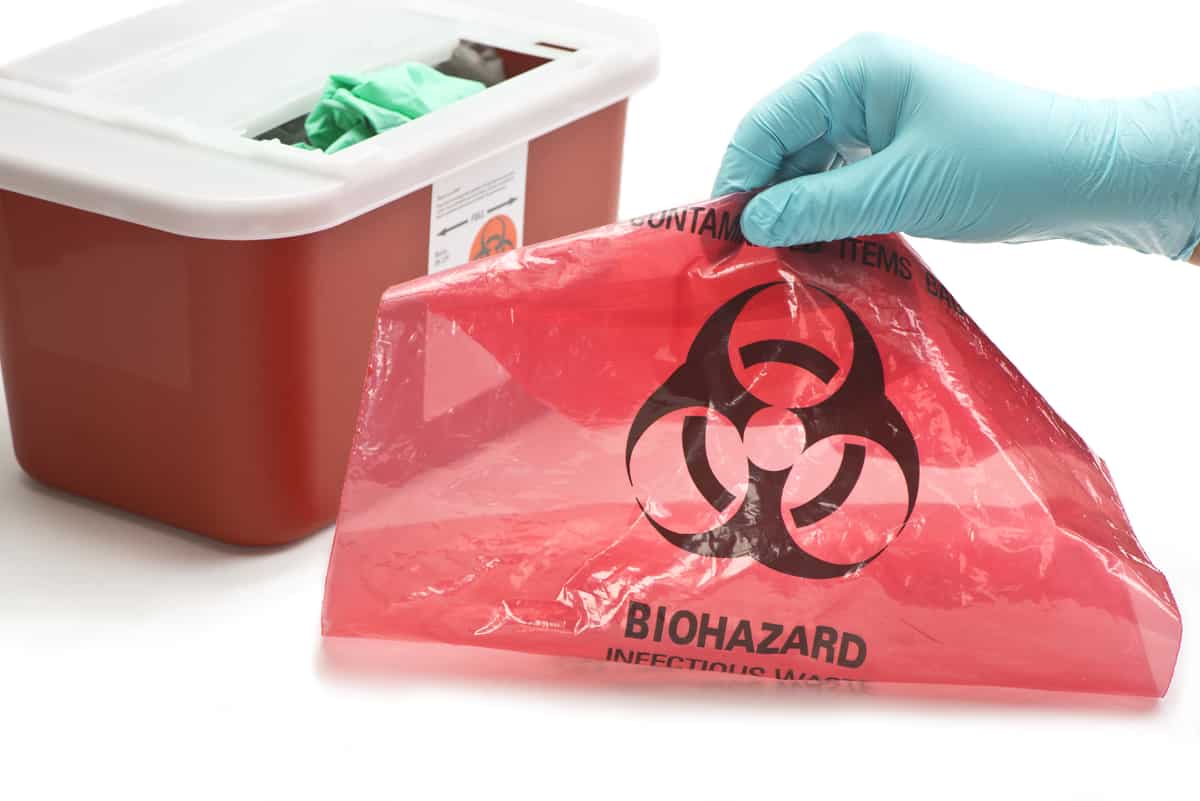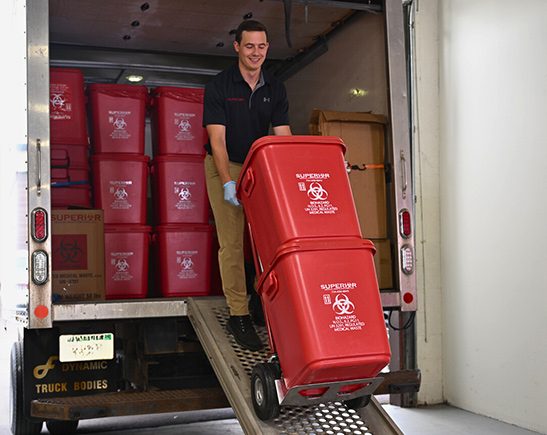Keep Ahead of Regulations: Expert Recommendations on Medical Garbage Disposal
In a world where the healthcare sector is regularly developing, it is imperative for clinical facilities to remain ahead of guidelines when it comes to the appropriate disposal of medical waste. From comprehending the different groups of medical waste to executing the best collection and partition techniques, this conversation will certainly provide valuable understandings and actionable ideas to assist centers remain in advance of regulations in the ever-changing landscape of clinical waste disposal.
Understanding Clinical Waste Categories
Understanding medical waste groups is vital for proper disposal and administration in healthcare facilities. Clinical waste refers to any kind of waste generated by medical care activities that may position a threat to public health and wellness or the setting. It is important to classify medical waste properly to ensure its risk-free handling, therapy, disposal, and transport.
There are numerous categories of medical waste that health care centers require to be acquainted with. The most typical groups consist of infectious waste, pathological waste, sharps waste, pharmaceutical waste, and chemical waste. Each group has specific guidelines and guidelines for its correct monitoring and disposal.
Infectious waste consists of products infected with blood or other physical fluids, such as gloves, gowns, and research laboratory societies. Pathological waste refers to human tissues, body organs, or body components that call for unique handling and disposal. Sharps waste includes used needles, syringes, and other sharp objects that can trigger injury and transfer infections. Drug waste comprises expired, unused, or contaminated drugs that need careful handling and disposal. Finally, chemical waste includes solvents, disinfectants, and other chemical compounds used in medical care centers.
Staying Up-To-Date With Regulatory Changes
Staying existing with governing adjustments is essential for medical care centers to make sure compliance and proper administration of clinical waste disposal. medical waste removal. With regulations frequently advancing, it is essential for medical care centers to stay current to prevent penalties, penalties, and prospective harm to the setting and public health and wellness
To stay in advance of governing modifications, healthcare centers ought to develop a system for tracking and tracking updates. This can be done by registering for regulative newsletters, going to conferences and workshops, and actively joining sector associations. In addition, facilities need to mark an employee or group responsible for remaining informed and distributing information to pertinent stakeholders.
Regular interaction with regulatory companies is likewise important. Health care centers ought to develop relationships with local, state, and government firms to ensure they understand any modifications in guidelines that may affect their waste administration methods. This can be done via regular meetings, involvement in public remark periods, and aggressive engagement with governing firms.
In addition, healthcare facilities should think about partnering with waste management business that specialize in clinical waste disposal (medical waste disposal services with WasteX). These firms are typically skilled in the most recent guidelines and can provide assistance and support to make sure conformity
Applying Correct Collection and Partition Approaches
To properly manage clinical garbage disposal, medical care centers must establish proper collection and segregation approaches based on governing standards. Carrying out these approaches makes certain the secure handling and disposal of possibly harmful products, protects the setting, and decreases the threat of injuries and infections to medical care employees and the general public.
Appropriate collection and segregation methods entail making use of assigned containers and identifying systems. Healthcare facilities need to give plainly labeled containers for different kinds of clinical waste, such as sharps, infectious waste, pharmaceutical waste, and non-hazardous waste. These containers should be color-coded and plainly significant to avoid complication and advertise easy identification.
In addition, health care facilities should educate their personnel on the correct treatments for gathering and setting apart clinical waste. This includes enlightening them on the different kinds of waste, the proper containers to use, and the importance of adhering to guidelines and guidelines. Routine training sessions and refresher training courses ought to be performed to guarantee that team member remain updated on best methods.
Additionally, medical care facilities must establish a system for routine collection and disposal of medical waste. This may entail partnering with certified waste monitoring companies that concentrate on medical waste disposal. These firms will make sure that the collected waste is delivered and gotten rid of in conformity with regulatory demands.
Picking the Right Disposal Methods

Incineration is among one of the most usual and reliable approaches for getting rid of specific kinds of clinical waste, such as pathological waste and sharps. It Continued includes the controlled combustion of waste at heats, minimizing it to ash. Incineration can release harmful pollutants right into the air and add to air contamination.

Chemical treatment involves the use of chemicals to reduce the effects of the waste and decontaminate. Microwave therapy makes use official source of microwave power to warmth and decontaminate the waste.
Making Certain Conformity Via Documentation and Training
After carefully considering the suitable disposal methods for medical waste, healthcare centers have to ensure conformity with laws and decrease ecological effect by carrying out efficient paperwork and training procedures. This step is crucial in keeping a lasting and risk-free atmosphere for both healthcare employees and the public.

Healthcare employees that take care of clinical waste needs to obtain ideal training on waste partition, taking care of, and disposal treatments. By giving thorough training, medical care centers can equip their personnel to make informed decisions and minimize the threat of inappropriate waste disposal.
Verdict
Finally, staying ahead of regulations in clinical garbage disposal is vital for health care facilities. medical waste removal service. Comprehending the different groups of clinical waste, staying upgraded with governing modifications, executing proper collection and partition techniques, choosing the ideal disposal techniques, and guaranteeing conformity with documentation and training are all essential actions. By complying with these guidelines, medical care organizations can effectively get rid of and handle of clinical waste in click a risk-free and responsible manner
From understanding the various classifications of clinical waste to carrying out the best collection and partition techniques, this conversation will give useful insights and workable tips to assist centers stay ahead of laws in the ever-changing landscape of medical waste disposal. - medical waste disposal services with WasteX
The most typical groups consist of transmittable waste, pathological waste, sharps waste, pharmaceutical waste, and chemical waste. Healthcare facilities ought to offer clearly identified containers for different types of medical waste, such as sharps, contagious waste, pharmaceutical waste, and non-hazardous waste. Health care centers must develop a thorough system to videotape and track all facets of medical waste disposal, including kinds of waste created, amounts, and disposal approaches made use of. Medical care employees that manage medical waste ought to get suitable training on waste segregation, handling, and disposal procedures.